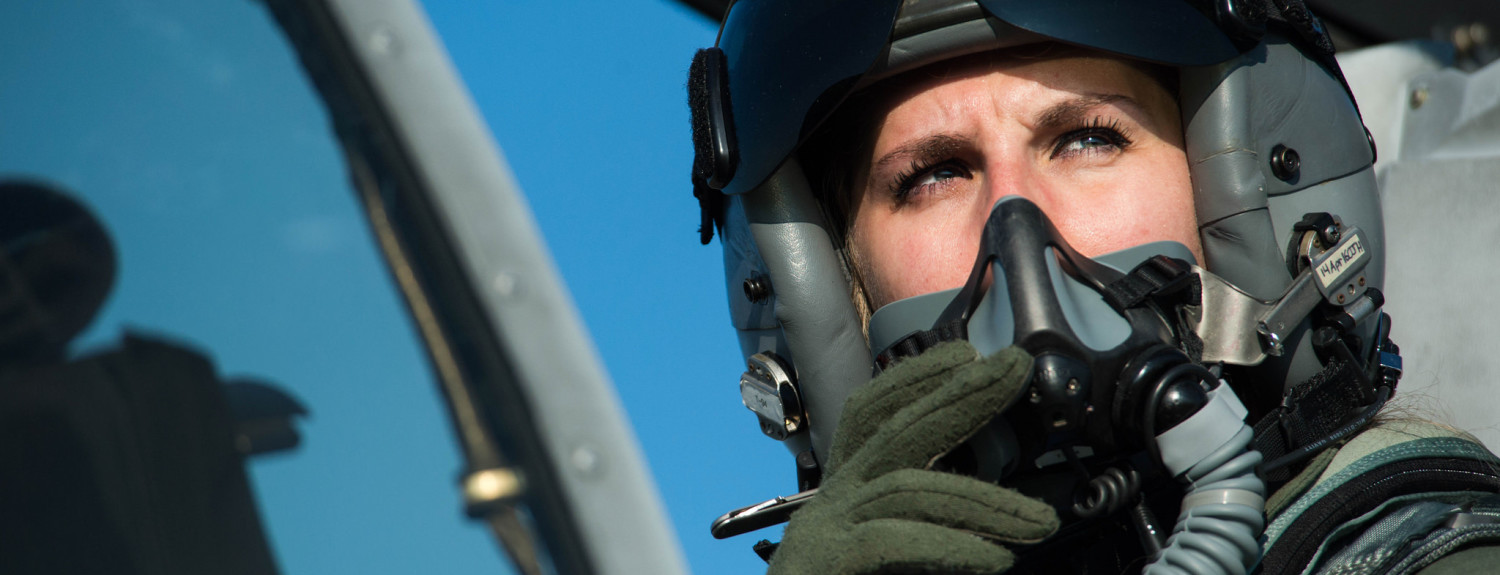(Photo Credit: U.S. Air Force photo/Staff Sgt. Joe W. McFadden)
The age of fighter pilot is coming to an end.
While the U.S. military didn’t launch any aircraft until an experimental takeoff aboard the USS Birmingham in 1910, the exploits of skilled fighter pilots in World War II cemented their place in American defense strategy. Why is this being disrupted 70 years later?
The F-35
As the wildly expensive F-35 Joint Strike Fighter nears completion, military officials have predicted the doom of the traditional fighter pilot.
“The F-35 should be, and almost certainly will be, the last manned strike fighter aircraft the Department of the Navy will ever buy or fly,” Navy Secretary Raymond Mabus boldly said of the jet in May 2015.
Last summer, a leaked report claimed that the F-35 wasn’t as good at dogfighting as the F-16, the plane it is supposed to replace. The Pentagon responded that was because the F-35 doesn’t need to dogfight. And honestly, it was right.
Dogfighting in World War II involved getting an enemy in visual range, sneaking up on them, manually lining up the crosshairs and blasting them before they got out of the way. Now almost all air-to-air combat is done outside visual range. Technology is sophisticated enough that a pilot can learn the location of an enemy aircraft from many sensors and GPS satellites. Thanks to guided missiles, that same pilot can take out an enemy before even coming within 100 miles of it.
The skills that made fighter pilots so indispensable in the past can now be provided by machines.
Unmanned Drones
Unlike human pilots, unmanned drones can fly for hours on end and carry out mission after mission without stopping. Factors and milestones that impact human productivity–starting a family, suffering an injury, moving to a new base, going through counseling, etc–don’t affect unmanned drones at all.
Popular Science also notes that it’s arguably cheaper.
The cost of training can be staggering: The Air Force spends $14,183 an hour to fly a single F-35A, according to the 2015 Department of Defense Budget. That’s just in peacetime training. Budgeting 13 hours of crew time per month, that equals $2.2 million a year, for one crew’s training.
In the end, sending drones into the field instead of manned planes can save lives and money.
Of course, being a drone remote pilot isn’t a walk in the park. Studies have found that drone pilots are just as emotionally impacted by the results of their missions, and the Air Force is doing its best to boost pilot retention. But at the end of the day, drones get the same job done at less cost to the taxpayer and with less risk to the pilot. To some, that’s a win-win.
Sequestration
With shrinking military budgets, fighter pilots are getting less flying hours and training. In 2013, the Air Force was forced to stand down 17 of its combat squadrons and reduce the flight hours for many more for three months. The service is still trying to recover the training hours lost during that time.
If the most recent Air Force budget is denied by Congress, it will have to cut 41,000 flying hours. This would put a huge dent in combat readiness among military pilots–and make unmanned, ready-to-fly drones look a little more appealing.
Thankfully for pilots, drones aren’t without their flaws. Certain classes of military drones tend to fall out of the sky at random thanks to manufacturer hiccups.




































